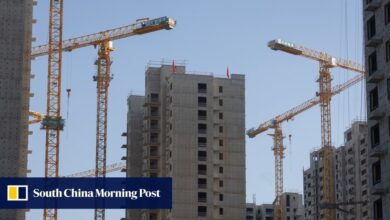What is sesamoiditis in the foot and what can be done about it? – World Pakistan

-
Author
Craig Payne -
Published
July 26, 2024 -
Word count
543
Sesamoiditis is a disorder observed as inflammation and pain in the small sesamoid bones. These sesamoid bones are two smaller, pea-shaped and size bones positioned under the bottom of the big toe within the foot. These kinds of sesamoid bones act as levers, providing leverage to the tendons that help move the big toe or hallux just like that the patella serves as a pulley around the knee joint. Sesamoiditis traditionally evolves progressively and is often caused by repeated pressure or too much use of the feet. The main triggers are generally this excessive use and recurring pressure. Physical activities that involve repetitive stress or impact on the ball of the foot, including basketball, jogging, dance, or bouncing, can bring about the development of sesamoiditis. These high-impact sports that entail rapid and powerful movements, such as basketball or tennis are more likely to add to the risk because the front foot where the sesamoid bones are is where you rotate over the foot. Traits such as having a high mid-foot (arch), prominent or bigger sesamoid bones, or too much inward rolling of the foot (overpronation) could put extra stress on the sesamoid bones. Using footwear that are lacking appropriate shock absorption, support, or have a tight toe area can also play a role in sesamoiditis by raising strain about the forefoot.
The key sign of sesamoiditis is localized discomfort under the bottom of the great toe on palpation. This soreness can be described as a dull, aching, or throbbing and typically gets worse with more activity. The involved area underneath the front foot might appear inflamed, red, or warm to the touch. There might be difficult taking weight. Commonly walking or bearing weight on the ball of the feet could be painful.
The main approach to treatment is rest and exercise adjustment. Sports activities need to be decreased or keeping away from activities which intensify the discomfort is important to allow the sesamoid bones to get better. Changing to lower impact physical exercises and integrating some cross-training exercises may help preserve fitness without having placing too much stress on the injury. Applying ice packs on the affected area more than once a day might help decrease pain and swelling. Nonsteroidal anti-inflammatory drugs (NSAIDs) like ibuprofen can help relieve pain and reduce inflammation when it gets very painful. Using shoes with higher shock absorption and support, especially in the forefoot area, might help alleviate stress about the sesamoid bones. Foot supports may be recommended to supply added shock absorption and fix biomechanical issues. Using pads or cushions under the involved area will help relieve strain and lower the pain. At times offloading products, such as a moon boot or crutches, may be required in severe cases to allow total rest. In some instances that are not responding to the stress reduction treatment, corticosteroid injections could be used to decrease pain and inflammation. Surgical treatment is rarely required for sesamoiditis with the exception of the most severe times when the conservative therapies tend not to offer relief and the soreness is continual or considerable damage has been done to the sesamoid bones. The actual medical procedures requires the surgical removal of the impacted sesamoid bones and really should be regarded as as a last resort.
This article has been viewed 11 times.
Source link




